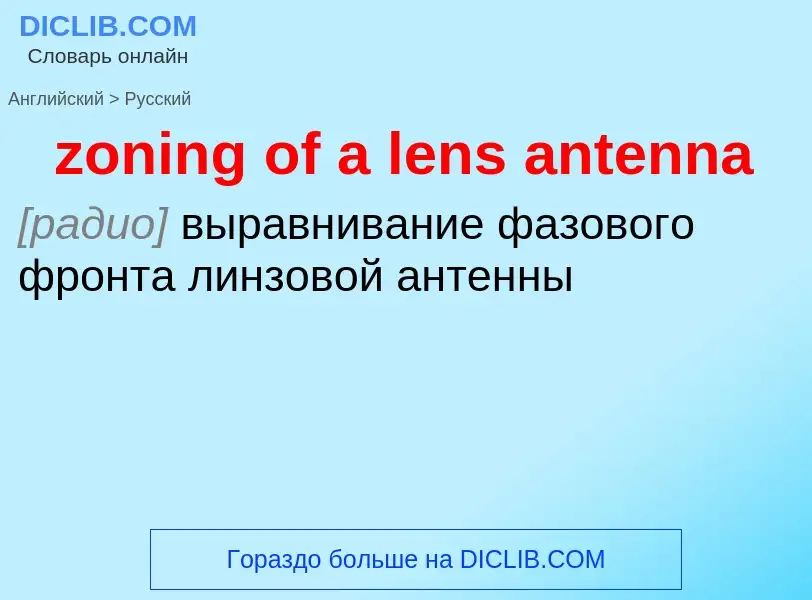Traducción y análisis de palabras por inteligencia artificial ChatGPT
En esta página puede obtener un análisis detallado de una palabra o frase, producido utilizando la mejor tecnología de inteligencia artificial hasta la fecha:
- cómo se usa la palabra
- frecuencia de uso
- se utiliza con más frecuencia en el habla oral o escrita
- opciones de traducción
- ejemplos de uso (varias frases con traducción)
- etimología
zoning of a lens antenna - traducción al ruso
Definición
1) Растение семейства бобовых со съедобными плоскими округлыми бобами.
2) Съедобные зерна такого растения.
2. ж.
Певчая птица семейства вьюрковых.
Wikipedia
A Luneburg lens (original German Lüneburg lens, sometimes incorrectly spelled Luneberg lens) is a spherically symmetric gradient-index lens. A typical Luneburg lens's refractive index n decreases radially from the center to the outer surface. They can be made for use with electromagnetic radiation from visible light to radio waves.
For certain index profiles, the lens will form perfect geometrical images of two given concentric spheres onto each other. There are an infinite number of refractive-index profiles that can produce this effect. The simplest such solution was proposed by Rudolf Luneburg in 1944. Luneburg's solution for the refractive index creates two conjugate foci outside the lens. The solution takes a simple and explicit form if one focal point lies at infinity, and the other on the opposite surface of the lens. J. Brown and A. S. Gutman subsequently proposed solutions which generate one internal focal point and one external focal point. These solutions are not unique; the set of solutions are defined by a set of definite integrals which must be evaluated numerically.





![Leica]] rangefinder lens Leica]] rangefinder lens](https://commons.wikimedia.org/wiki/Special:FilePath/Leica 3 lens.jpg?width=200)
![Different [[apertures]] on the same lens. Different [[apertures]] on the same lens.](https://commons.wikimedia.org/wiki/Special:FilePath/Lenses with different apertures.jpg?width=200)
